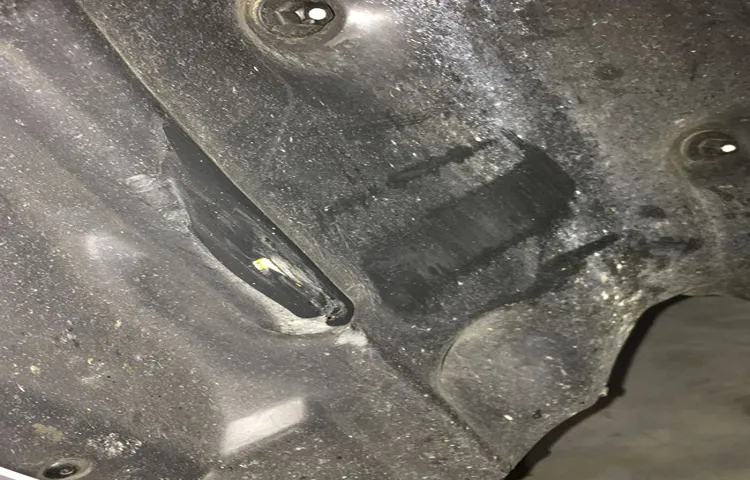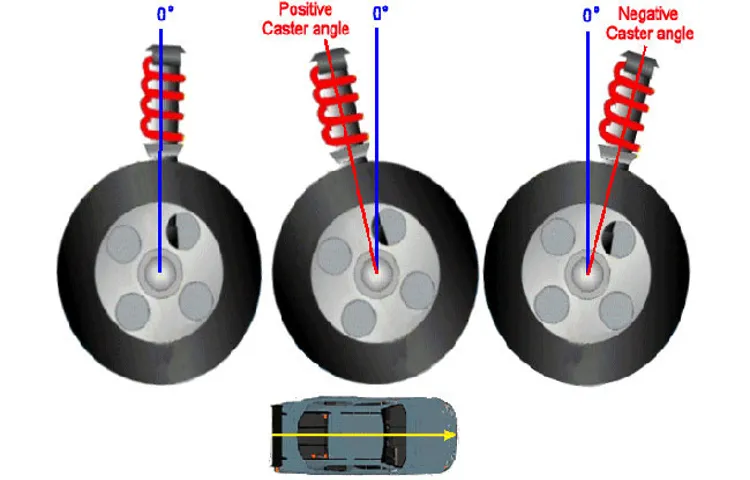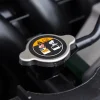Driving can be a thrilling experience, but it can also be a frustrating one when strange noises start to come from your car. One common issue that drivers can experience is the sound of their tires rubbing while turning right. This issue can occur due to different reasons, and it’s essential to know what to do when it happens.
When you start to hear a rubbing noise as you turn right, it’s essential to pay attention to what might be causing it. This could be due to worn-out bearings, damaged suspension components, or wheels that are out of alignment. Whatever the reason, this issue can lead to severe problems if not handled promptly.
If you’re not sure what’s causing the rubbing sound in your tires when turning right, it’s best to have a professional mechanic take a look. They can diagnose the problem and provide you with the necessary solutions to have your car back on the road safely. In the meantime, be sure to drive with extra caution and avoid making sharp right turns.
Your safety is crucial, and taking care of your car should always be a top priority. So, make sure always to be alert to any warning signs your car might be giving you, and don’t hesitate to seek help from professionals.
Table of Contents
What Causes Tire Rubbing?
If you’ve noticed a rubbing sensation coming from your tires when you turn right, you’re not alone. There are several reasons why this could be happening. One of the most common causes is the tires rubbing against the fenders or the wheel well liner.
This often happens when you’ve installed larger tires that are not compatible with your vehicle’s stock suspension. The tires may also rub against the body of the vehicle if the wheels are not properly aligned. In some cases, the issue could be due to worn-out ball joints or tie rods, which can affect the positioning of the wheels.
Another culprit could be the steering system assembly, particularly the control arms, which may be bent or damaged and causing the tires to rub. It’s crucial to get a professional diagnosis of the problem to avoid accidents and to extend the life of your tires.
Misaligned Wheels
Misaligned wheels can lead to tire rubbing, causing serious damage to your tires. There are a few reasons why your wheels may be misaligned. Worn-out ball joints, tie rods, or control arm bushings can contribute to this issue.
Additionally, hitting a curb or a pothole can knock your wheels out of alignment. Improper installation of suspension or steering components can also cause misalignment. If you notice your tires rubbing against your wheel well, it’s important to have your wheels checked by a professional.
Not only can tire rubbing lead to uneven tire wear, but it can also cause decreased handling and stability on the road. Regular maintenance and alignment checks can help you to avoid these issues and keep your vehicle performing its best.

Worn Out Suspension Components
One common reason for tire rubbing is worn-out suspension components. Over time, parts like ball joints, control arms, and shock absorbers can become worn or damaged, causing the wheels to shift out of alignment. When this happens, the tires may start rubbing against the wheel well or fender, which can lead to damage to both the tires and the vehicle.
This issue can often be identified by a clicking or knocking noise when turning, as well as uneven tire wear. If you suspect that your suspension components may be worn out, it is important to have them inspected by a qualified mechanic as soon as possible to prevent further damage and ensure safe driving.
Oversized Tires
Have you ever experienced tire rubbing while driving your vehicle with oversized tires? It can be a frustrating and annoying problem that can potentially damage your tires and suspension system in the long run. But what causes this issue? Generally, tire rubbing occurs when the tire size exceeds the allowed clearance for the wheel well or fender. This can happen when you install larger-than-standard tires, and the tire profile and shape interfere with the vehicle’s body parts.
Additionally, suspension components might not be adjusted to accommodate the new tire size, causing further rubbing and damage. That’s why it’s crucial to consult with a professional technician and choose the right tire size that fits your vehicle’s specifications and clearance requirements. By doing so, you can avoid tire rubbing altogether and ensure optimal handling performance and safety while driving on the road.
Wheel Offsets
Wheel Offsets Tire rubbing can be a frustrating problem, especially if you’ve just put new rims on your vehicle. The most common cause of tire rubbing is improper wheel offsets. Wheel offsets refer to the distance from the hub of the wheel to its centerline.
When choosing new wheels, it’s important to make sure the offset is appropriate for your vehicle, or you risk running into problems like rubbing. If the offset is too low, the wheel sits too far out from the hub, causing the tire to rub against the fender. Conversely, if the offset is too high, the wheel will sit too far in, which can cause the tire to rub against the suspension components.
It’s important to consult with a professional who can help you choose the proper wheel offsets for your vehicle to avoid this frustrating problem. Remember, proper fitment is key to enjoying your new wheels without any issues.
What Are The Signs Of Tire Rubbing?
Tire rubbing when turning right can be a frustrating and potentially dangerous issue for motorists. There are several signs that indicate tire rubbing, such as an unusual sound when turning or a noticeable vibration in the steering wheel or chassis. In some cases, the tires may even appear to be physically rubbing against the wheel well or suspension components.
Other signs that suggest tire rubbing include uneven wear patterns, reduced clearance between the tire and the fender, and tire damage such as punctures or cuts. If you suspect that your tires may be rubbing, it is important to get them inspected by a qualified mechanic as soon as possible to avoid further damage and potential accidents on the road. By addressing this issue promptly, you can ensure that your vehicle is safe and comfortable to drive, and that your tires last as long as possible.
Scuffing Or Squeaking Noises When Turning Right
If you’re experiencing scuffing or squeaking noises whenever you turn right, you might be wondering if your tires are rubbing. Tire rubbing occurs when there is contact between the tire and an obstacle, such as the fender or the suspension components, during sharp turns. This can cause scuffing or squeaking noises and can also lead to tire wear, reduced handling, and lower fuel efficiency.
Some signs of tire rubbing include uneven tire wear, scratches or scuff marks on the wheel wells or tires, and a bumpy or rough ride. If you suspect that your tires are rubbing, it’s essential to have them inspected by a mechanic as soon as possible. They can diagnose and repair the issue, preventing further damage and ensuring your safety while driving.
Remember to check your tire pressure regularly and make sure that your wheels are properly aligned to reduce the risk of tire rubbing. Overall, keeping your tires in good condition is crucial for safe and smooth driving.
Visible Scratches On The Wheel Rims Or Fender
Tire rubbing can be a real headache for car owners. The tell-tale signs can be quite noticeable too! One of the most common signs of tire rubbing is visible scratches on the wheel rims or fender. This is usually a clear indication that the tire is rubbing against something as it rotates.
When the tire rubs consistently in the same spot, it eventually wears down the tire and causes scratches on the rim. This is especially true when the tire is oversized or when there is a suspension issue. If you notice any visible scratches on your wheel rim or fender, it’s time to check whether you have tire rubbing issues.
Don’t wait too long as it could lead to more extensive damage over time. Make sure to consult with a professional mechanic to help diagnose and repair any potential issues.
How To Fix Tire Rubbing?
Are you experiencing tire rubbing when turning right? This can be a frustrating issue for any driver. The most common cause for this problem is that the tires are too large for the vehicle, causing them to rub against the fender when turning. One solution is to switch to smaller tires that fit better.
Another possible cause is worn-out suspension or steering components that cause the tires to shift out of alignment during turns. Replacing these parts can solve the issue. It’s also important to check the tire pressure and ensure that all tires are evenly inflated.
Additionally, check the wheel bearings and make sure they are well lubricated. Finally, double-check that there are no loose or damaged parts in the wheel well or suspension system that could be causing the rubbing. By following these steps, you can fix tire rubbing and ensure a smoother and safer ride.
Adjust The Wheel Alignment
If you’re experiencing tire rubbing, one possible solution is to adjust the wheel alignment. Wheel alignment refers to the angle at which your tires are positioned in relation to the ground and to each other. If your alignment is off, your tires may not be perfectly parallel to the ground, causing them to rub against the wheel well or fender.
Luckily, most tire rubbing issues due to alignment can be resolved by hiring a professional mechanic to adjust the alignment. They will use specialized equipment to measure and adjust the camber, caster, and toe of your wheels to ensure that they’re aligned correctly. This simple fix can help prevent further damage to your tires and vehicle, as well as improve the overall handling and performance of your car.
So if you’re experiencing tire rubbing, don’t wait until it becomes a bigger problem. Get your alignment checked now and enjoy smoother, safer driving.
Replace Worn Suspension Parts
If you’re hearing an annoying tire rubbing sound while driving, one possible cause could be worn out suspension parts. Over time, the suspension components of your vehicle can wear out due to normal wear and tear, causing misalignment and rubbing against the tires. The keyword here is “replace,” and it’s crucial to replace the worn suspension parts as soon as possible to prevent damage to other parts of the car and ensure a smoother ride.
Some common suspension parts that can wear out are ball joints, control arms, and sway bar links. Don’t ignore the signs of a worn-out suspension system, such as uneven tire wear, bouncing and swaying while driving, or difficulty steering. Replacing these parts can be costly, but it’s a necessary expense to ensure your car’s safety and longevity.
Just like how you need to replace your shoes when they wear down, your car’s suspension parts need attention too.
Install Properly Fitted Tires
Tires rubbing against the body of your car can cause all sorts of problems, from uneven wear to potential damage to your suspension. One easy solution is to make sure your tires are properly fitted in the first place. This means choosing the right size and style of tire for your vehicle, and ensuring they are balanced and aligned correctly.
If you’ve already had your tires checked and they’re still rubbing, there are a few other things to consider. You might need to adjust the height of your vehicle or make small alterations to the fender or bumper. Another option is to switch to narrower tires or use wheel spacers to create some space.
Don’t overlook the importance of regular maintenance, including keeping your tires properly inflated, rotating them regularly, and checking for signs of wear and tear. By taking the proper precautions and addressing any issues as soon as they arise, you can avoid tire rubbing and keep your car running smoothly.
Consider Wheel Spacers Or Offset Adapters
When you experience tire rubbing on your vehicle, it can be a frustrating experience. Fortunately, there are a few solutions to this problem. One option to consider is using wheel spacers or offset adapters.
These devices widen the distance between the hub of the wheel and the axle, allowing the wheel to sit further away from the vehicle’s body. With the added space, the tire is less likely to rub against the body or frame of the vehicle. However, it’s important to make sure that the spacers or adapters are compatible with your specific vehicle and the wheels you’re using.
Additionally, it’s essential to use the proper torque specifications when installing them to avoid any potential issues. So, if you’re experiencing tire rubbing, give wheel spacers or offset adapters a try and see if they can help solve the problem.
Conclusion
In the end, the answer to the age-old question of why your tires are rubbing when turning right is simple – because that’s just how the cookie crumbles. Our wheels are like a well-oiled machine, each part intricately connected and working together to create a seamless driving experience. But sometimes, even the best machines can hit a snag, and in this case, it’s the dreaded tire rub.
Whether it’s due to worn-out suspension parts, incorrectly-sized tires, or just plain bad luck, the important thing is to address it before it gets worse. So, if you find yourself in a tight spot and your tires are rubbing, remember – don’t turn right, turn left and get it fixed!”
FAQs
What causes tire rubbing when turning right?
Tire rubbing when turning right is often caused by worn or damaged suspension components, tires that are too big for the vehicle, or misaligned wheels.
How can I prevent tire rubbing when turning right?
You can prevent tire rubbing when turning right by making sure your wheels are properly aligned, selecting the correct tire size for your vehicle, and regularly inspecting and maintaining your suspension system.
Is tire rubbing when turning right dangerous?
Yes, tire rubbing when turning right can be dangerous as it can cause tire damage, affect steering and handling, and lead to a potential loss of control while driving.
Can tire rubbing when turning right damage my vehicle?
Yes, tire rubbing when turning right can cause damage to your vehicle’s suspension, tires, wheels, and bodywork over time if left unchecked.
How much does it cost to fix tire rubbing when turning right?
The cost to fix tire rubbing when turning right can vary depending on the cause and severity of the issue, but it can range from a few hundred dollars for minor repairs to several thousand dollars for extensive damage.
Can I drive with tire rubbing when turning right?
It is not recommended to drive with tire rubbing when turning right as it can create safety hazards and cause further damage to your vehicle.
How frequently should I inspect my tires and suspension system to prevent tire rubbing when turning right?
It is recommended to inspect your tires and suspension system at least once every six months to identify and address any potential issues before they become more serious.



